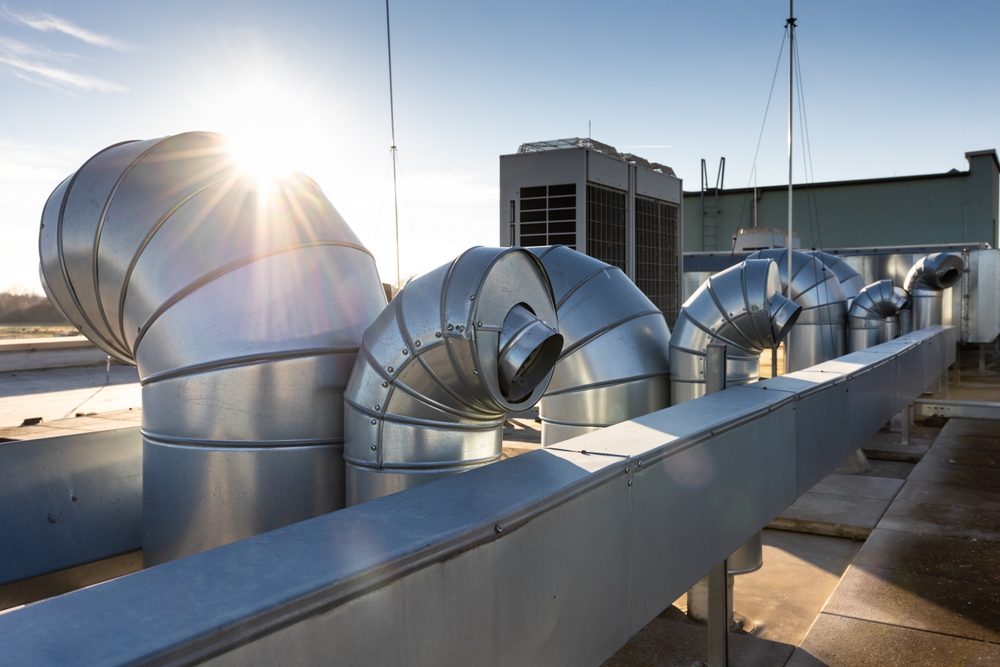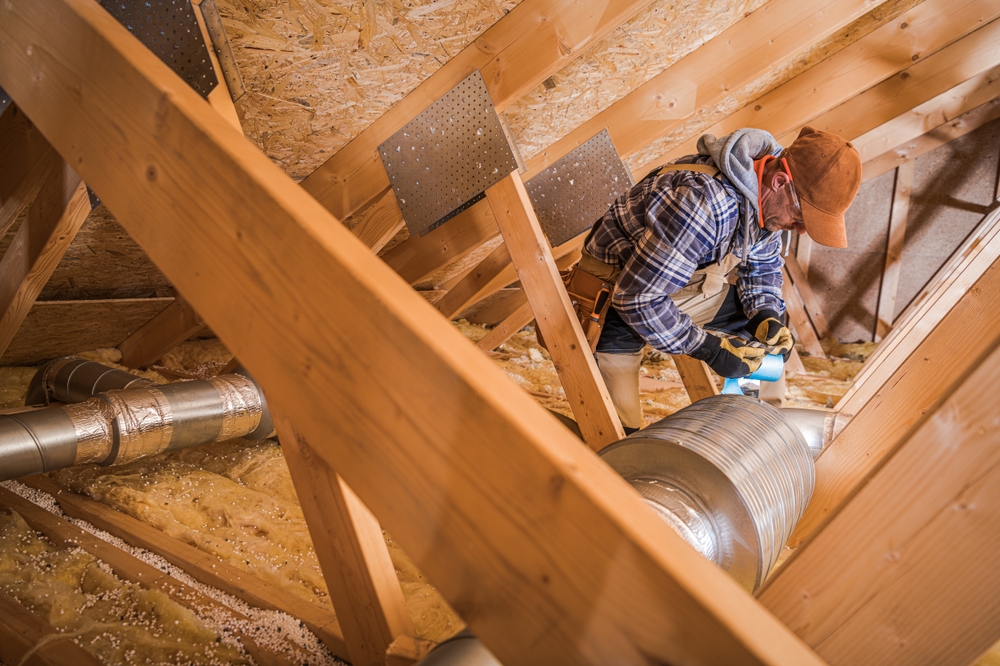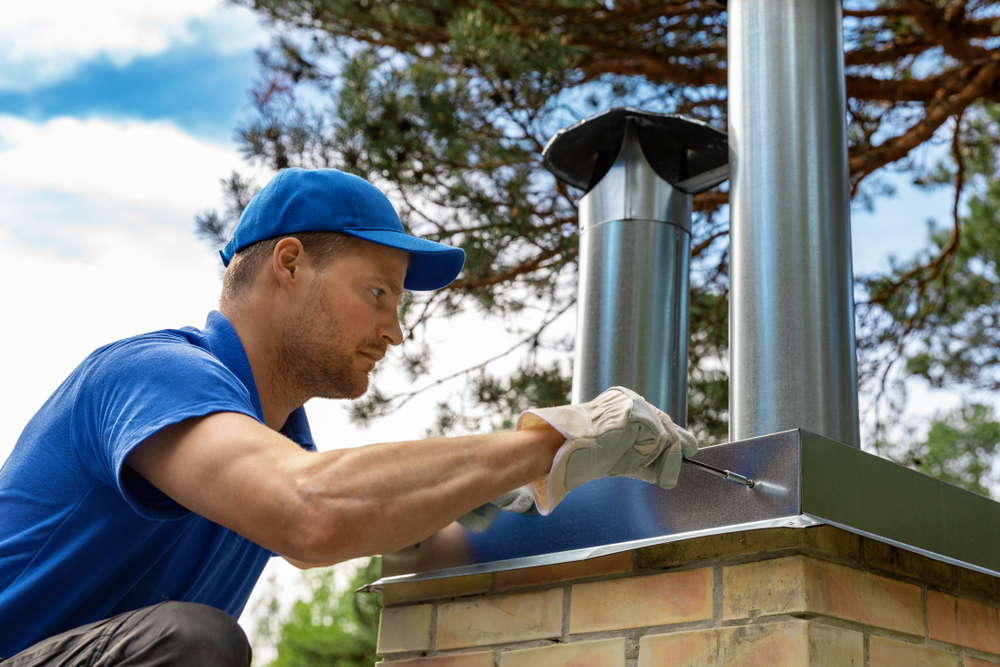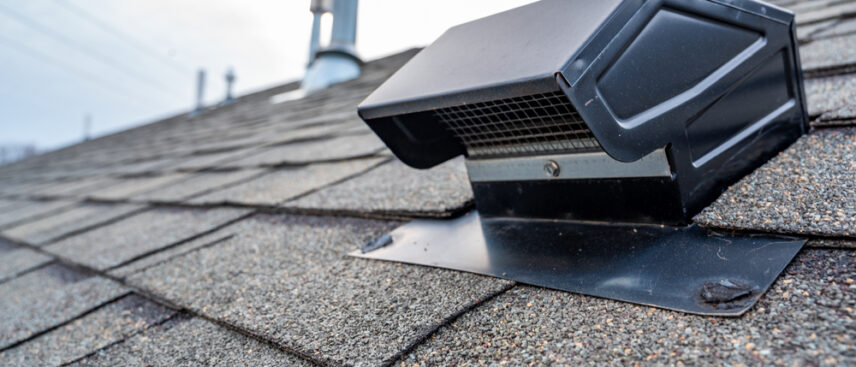While a roof needs waterproof construction to protect your home from moisture, it also requires proper ventilation. Adding the right vents to your roof assembly allows hot air and evaporated moisture to escape the attic space.
Without adequate roof ventilation installation & repair, the entire structure is at risk for damage, and you’ll spend far more on cooling in the summer. A lack of ventilation can also cause issues with ice damming in the winter. Protect your roof and the rest of your home by ensuring proper ventilation that meets modern standards for air circulation.
Proper Roof Ventilation
Ventilating the roof and attic space offers several benefits to your home. First, it’s essential for allowing moisture to escape. Many materials, like asphalt shingles, are only water resistant and may still let a small amount of water through during a heavy storm. Proper ventilation ensures it evaporates out rather than staying trapped in the home. It’s also necessary for releasing moisture that builds up inside the home from activities like showering and cooking.
Second, good attic ventilation is also a matter of home energy efficiency. Encouraging hot air to escape the attic rather than buildup reduces the cooling load on your HVAC system. Third, ventilating under the roof extends the lifespan of most materials. Extreme heat and trapped moisture inside the roof assembly can damage asphalt, wood, and clay tile shingles. Finally, circulating hot and used air out of your home through the roof ventilation system reduces the allergens in the air and dust infiltration from the attic space.
Signs You Need Roof Ventilation Services
There are a few signs you might notice if your home is lacking in proper roof ventilation. Schedule an inspection to see what kind of roof vent installation or repair you need if you’re struggling with any of the following.
- Uneven Indoor Temperatures: Your upper floors don’t have to feel significantly hotter than the rest of the house. Good roof ventilation releases hot air that rises and draws cool air upwards, evening out indoor temperatures.
- Visible Moisture Damage: Check out your attic space and look for visible water stains, mold growth, soggy insulation, or peeling paint. All of these indicate moisture issues that could require extra ventilation.
- High Energy Bills: Rising energy bills or unexplained spikes in cooling costs could come from excess heat buildup in the attic area. Improving the attic ventilation could lower your cooling bills all summer long.
- Visible Signs of Poor Ventilation: The vents on your roof should be visible from inside the attic space. If they’ve been blocked by insulation or weren’t installed in the first place, you won’t get the benefit of proper roof ventilation.
Types of Roof Ventilation Systems

The roof ventilation system will usually consist of a few parts that work together in concert to create the airflow you need. The soffit vents are placed in the underside of the roof’s eaves, allowing a steady flow of fresh air into the attic space. If there isn’t any space in the eaves for these vents, they can be placed at the very top of the wall instead where they can open into the attic space or roof assembly.
To release the hot air that accumulates along with any lingering moisture, you’ll need an exhaust vent along the ridge of the roof peak. If you have a roof design that lacks a central peak, powered vents can draw the air to expel it without the natural effect of rising heat. Powered vents may be a good idea, even with a ridge vent, if it’s not sufficient to handle your area’s summer heat.
No matter what kind of roof ventilation system you choose, it needs to stay balanced. Only a professional installer can design the right amount of intake vents to exhaust vents for optimal airflow without risking moisture entering the roof assembly.
Roof Ventilation Installation Services

If your home has no roof ventilation system, start with a thorough inspection. A professional can determine the appropriate ventilation system based on the climate and roof type. Next, they’ll guide you through selecting the right type and number of vents. Finally, the installer will ensure proper placement of all vents and flashing to prevent leaks. Some installers may even include a test to measure the airflow in the improved attic space.
Roof Ventilation Repair Services
Homes with the correct roof ventilation system may still need repairs over time. The most common types of roof vent repair services include:
- Leaks from Improper Installation: Faulty flashing or incorrect placement can allow water to enter the roofing assembly or attic.
- Blocked and Clogged Vents: Animals and insects can clog vents by trying to nest in them. It’s not uncommon for insulation to shift and cover the soffit vents in particular.
- Damaged Vents: Cracked covers and broken vents tend to let in bugs and animals along with the air. Protect your attic by restoring the covers or screens.
Maintaining Optimal Roof Ventilation

Only regular home inspections will identify potential blockages and signs of wear and tear. You can help by trimming back trees, shrubs, and other vegetation that could crack or block the soffit vents. Trim trees so they don’t drop branches on the roof’s peak as well. While you need plenty of insulation in the attic to keep your home comfortable, make sure the insulation doesn’t block the soffit vents from the inside.
Finding a Qualified Roofing Contractor
Choose a roofing contractor with experience in roof ventilation systems. Look for certifications from organizations like the International Institute of Building Enclosure Consultants. It also helps if they’re experienced in designing ventilation for your area in particular. Check on the liability insurance carried by the contractor and that they offer a warranty on their work. Finally, read a few of the online reviews left by real customers.
Verifying their references can go a long way to assure you of their quality of service. Make sure they provide detailed written estimates and are committed to clear communication with you throughout the process.
While most roofing contractors can install basic ventilation systems, you’ll get better results from hiring a specialist. Find the qualified ventilation installers you need today.
